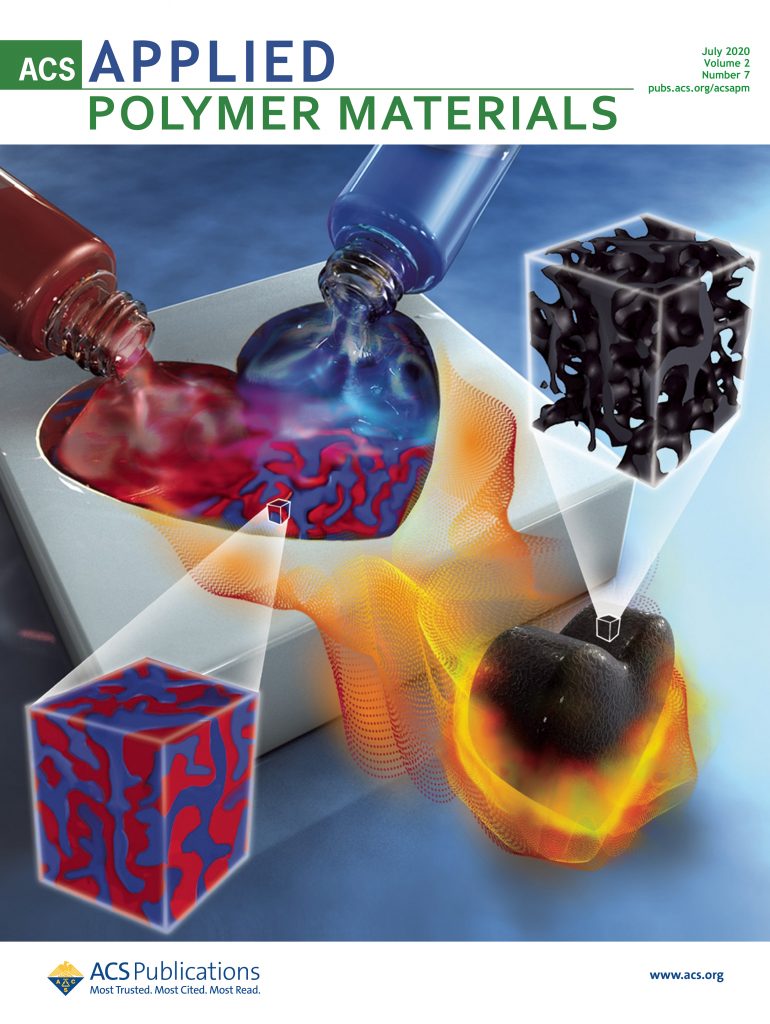基于冷冻铸造辅助紫外线固化后脱盐技术的多功能柔性可穿戴传感器用高灵敏度导电共聚物水凝胶
IF 4.7
2区 化学
Q2 MATERIALS SCIENCE, MULTIDISCIPLINARY
引用次数: 0
摘要
在柔性可穿戴设备领域,高灵敏度、稳定的导电性和适当的机械强度对应变传感器的性能至关重要。含有聚(3,4-亚乙二氧基噻吩)/木质素磺酸盐(PEDOT/LS)的水凝胶即使能安全、稳定地提高导电性,也势必会破坏水凝胶网络并影响其机械特性。在这项工作中,首次提出了冻浇辅助紫外固化(SFUV)后盐析的策略,作为解决这一问题的方法。水性聚氨酯丙烯酸酯和聚丙烯酰胺在低温下共聚形成了具有各向异性蜂窝状通道堆叠结构的微晶水凝胶。当溶剂含量达到 70% 时,SFUV-Fe 水凝胶在拉伸性能(218 kPa)、粘附性(塑料上 13.9 kPa)、测量系数(5.07)和导电性(2.31 S/m)方面均优于典型的水凝胶。此外,SFUV 策略还为水凝胶提供了多种功能,包括抗疲劳、自我修复和保湿能力,从而能够准确可靠地检测人体在一段时间内的复杂运动。因此,这项研究为开发适用于各种应用的精密、坚固、耐受性强的导电软材料提供了一个全面的解决方案,使共聚物水凝胶成为柔性可穿戴电子产品的理想候选材料。本文章由计算机程序翻译,如有差异,请以英文原文为准。

High-Sensitivity Conductive Copolymer Hydrogel for Multifunctional Flexible Wearable Sensors Based on Salting-Out after Freeze-Casting Assisted UV-Curing
High sensitivity, consistent conductivity, and suitable mechanical strength were essential for strain sensor performance in the field of flexible wearables. The hydrogel containing poly(3,4-ethylenedioxythiophene)/lignosulfonate (PEDOT/LS) was bound to destroy the hydrogel network and affect its mechanical characteristics, even if it could safely and consistently increase conductivity. In this work, a salting-out after freeze-casting assisted UV-curing (SFUV) strategy was first offered as a solution to this problem. Waterborne polyurethane acrylate and polyacrylamide were copolymerized at low temperatures to form microcrystalline hydrogels with an anisotropic honeycomb channel stacking structure. When the solvent level was up to 70%, SFUV-Fe hydrogels outperformed typical hydrogels in terms of tensile properties (218 kPa), adhesion (13.9 kPa on plastics), gauge factor (5.07), and conductivity (2.31 S/m). Furthermore, the SFUV strategy provided the hydrogel with a variety of functionalities, including antifatigue, self-healing, and moisturizing capabilities, enabling for accurate and reliable detection of complicated human movements over time. As a result, this study presented a comprehensive solution for the development of sophisticated, strong, and resistant conductive soft materials appropriate for a variety of applications, establishing copolymer hydrogels as a promising candidate for flexible wearable electronic goods.
求助全文
通过发布文献求助,成功后即可免费获取论文全文。
去求助
来源期刊

ACS Applied Polymer Materials
Multiple-
CiteScore
7.20
自引率
6.00%
发文量
810
期刊介绍:
ACS Applied Polymer Materials is an interdisciplinary journal publishing original research covering all aspects of engineering, chemistry, physics, and biology relevant to applications of polymers.
The journal is devoted to reports of new and original experimental and theoretical research of an applied nature that integrates fundamental knowledge in the areas of materials, engineering, physics, bioscience, polymer science and chemistry into important polymer applications. The journal is specifically interested in work that addresses relationships among structure, processing, morphology, chemistry, properties, and function as well as work that provide insights into mechanisms critical to the performance of the polymer for applications.
 求助内容:
求助内容: 应助结果提醒方式:
应助结果提醒方式:


